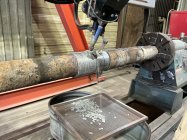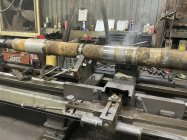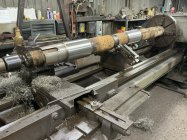danny
Silver $$ Contributor
I had to straighten something at work (actually, kind of often I do that), so I know what you are talking about here, starting gradually. I was straightening an approx. 3/4" x 24" rod, and at the time, it was bowing like a bow. Guy is walking by me, looking at it, exclaiming "what are you doing to that???" like I just set it down and immediately went Apeshit on it and had bent it way worse than it was to start. I kept going, a bit at a time, going farther and farther each time. It kept springing back until it finally had enough and went pretty straightYes. That is part of the trick.
Most you will have to “bend” a piece considerably past the actual straight because of spring back.
keep in mind, this process is not just hit it once with the tonnage and be done. the first time thing you have to do is ascertain exactly where the bend starts. As @Fast14riot just noted, often it can be bent between the journals as well. You have to ”work it out” so to speak.
We have a gage on the pump that tells me exactly how many PSI I am exerting, I get an idea through trial exactly what it is taking to move the metal. Every piece of steel can be a little different.
With this particular Rudder Stock, it was taking upwards of 7000 psi on the gage to straighten. With the spread on the arms that I had here, that means it was taking about 280 tons to move the metal.
One of the things about straightening items with a rig such as this is it is as much of an art as anything. Years of doing this has taught me, and several of my men, exactly how to, and where to, apply the tonnage for best results.
Danny
Last edited:













